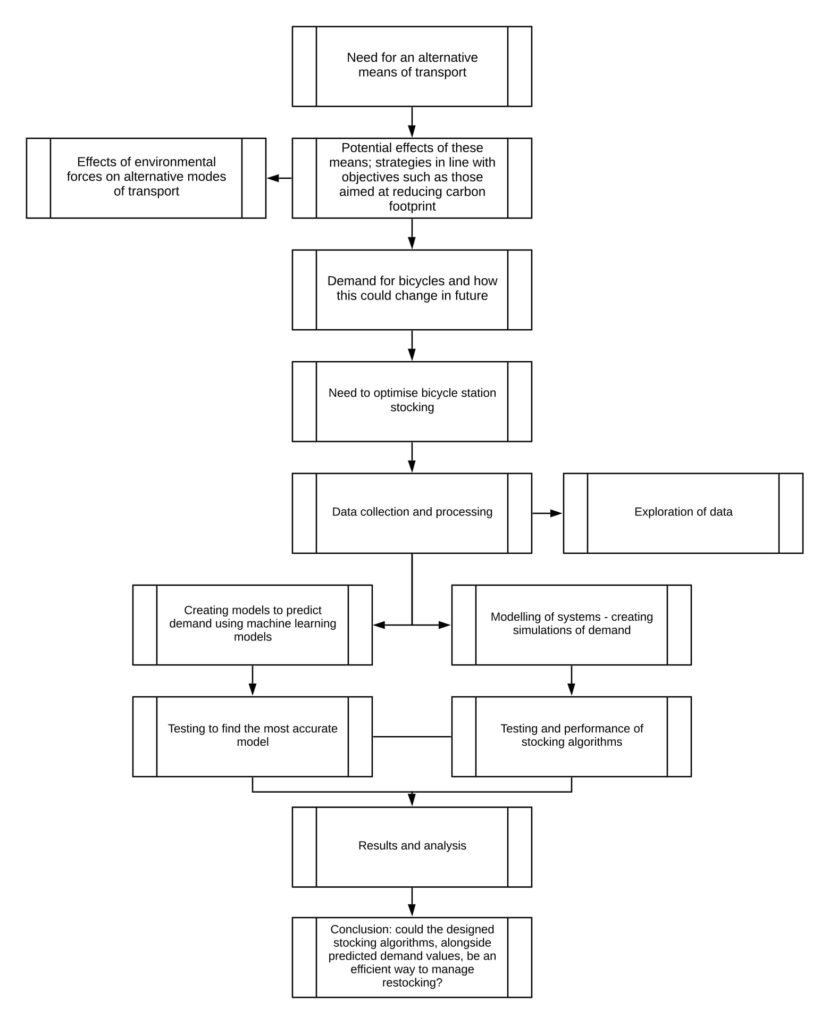his study aims to examine algorithmic approaches in increasing efficiency in bicycle-sharing systems (BSS), with the aim of increasing bicycle-sharing sales by ensuring availability when needed with the use of active restocking techniques. The study revolves around the dataset from a full year of BSS operation for the most popular bicycle- sharing service in New York City, Citi Bike.
Public bicycle schemes have received increasing attention in recent years. As of 2013, there were over 500 bicycle-sharing schemes around the world, and this figure is on a constant, albeit gradual, increase. More people are shifting towards renting bicycles for short trips due to the inexpensiveness of the scheme, as well as its convenience and minimal impact on the environment. Most of the current bicycle-sharing structures are automatic rental systems supported by information systems that can easily record data about a trip from the moment a user takes a bicycle from a pick-up point until the user deposits it at a docking station[1].
Despite being popular, the Citi Bike service is not always plain sailing. One of the drawbacks, for example, is that the high demand for this service by commuters heading for work results in a rapid exhaustion of bicycles at pick-up stations during peak morning hours in residential areas. Similarly, the docking stations in commercial areas fill up very quickly, rendering them unable to accommodate more bicycles [2].
Users of bicycle sharing systems unwittingly cause an imbalance in the system by creating demand in an asymmetric pattern, which may lead to unavailability of bicycles when the demand is high. This, in turn, brings about the potential loss of sales. In some situations, restocking a BSS (i.e. replenishing bicycle stations with full stock) after hours is not enough to warrant a well-balanced system.
This study focuses on the exploration of different means as to how to increase the efficiency of the scheme, primarily by rebalancing bicycle stations. At the most basic level, it would be necessary to determine the intensity of the demand experienced at the station(s) under observation at any given time. In this context, ‘demand’ refers to the number of bicycles taken out of a station at a given time. Thus, prediction of trip-demand at a station level is beneficial when seeking to predict the required stock at the respective stations. Knowing the possible number of future trips would be useful in the planning of when and how to restock during system operation. Hence, a scientific approach on this problem must be taken.

Data exploration was used to identify patterns and relationships in trip usage. Furthermore, it was established that machine learning techniques would be necessary for prediction of hourly demand of trips per station at a particular time of day. In addition, this study presents a number of bicycle (re)stocking strategies in the form of algorithms, as well as an array of predictive models used to anticipate the aforementioned hourly demand.
The outcomes of the optimised best predictive model, combined with (re)stocking algorithms, would determine if system efficiency could be improved in terms of less opportunities lost in deposit and pickup This would optimistically result in better availability of bicycles in stations, thus possibly increase customer satisfaction, and in turn potentially translating into more sales.
References/Bibliography:
[1] W. Wang, “Forecasting Bike Rental Demand Using New York Citi Bike Data,” Technological University Dublin, 2016.
[2] F. Chiariotti, C. Pielli, A. Zanella and M. Zorzi, “A Dynamic Approach to Rebalancing,” Sensors, vol. 18, no. 2, p. 512, 8 2 2018.
Student: Julian Portelli
Course: B.Sc. IT (Hons.) Software Development
Supervisor: Dr. Michel Camilleri
Co-supervisor: Dr. Peter Albert Xuereb
